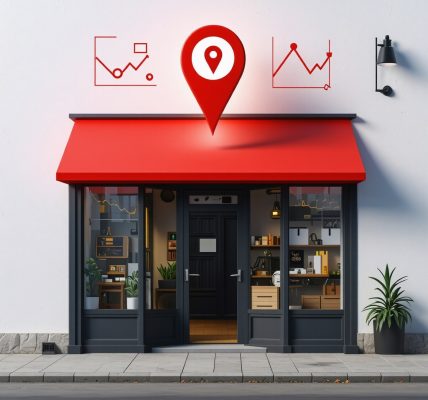Unlocking the Power of Google Maps SEO for Service Areas in 2025
In the evolving digital landscape of 2025, mastering Google Maps SEO for service areas is no longer optional but essential for local businesses aiming to dominate their market. Unlike traditional local SEO, service area businesses (SABs) face unique challenges—they must optimize for multiple locations without a physical storefront visible to customers. This makes enhancing Google Maps visibility a sophisticated endeavor that requires nuanced tactics beyond the basics.
Strategic Location Targeting: Beyond Pinpoint Accuracy
One of the most overlooked yet powerful strategies is precise service area definition within your Google Business Profile. Instead of broadly listing regions, leverage granular neighborhood or zip code targeting to signal relevance to Google’s local search algorithm. This micro-targeting increases the chances of appearing in localized “near me” searches, which are growing exponentially as mobile voice search and hyperlocal intent surge.
How can service area businesses effectively balance privacy with location targeting?
For SABs that operate from home or use virtual offices, maintaining privacy while maximizing local SEO is critical. Google allows businesses to hide their physical address while specifying service areas. The key is to communicate clearly in your profile and website content about the areas you serve, using consistent NAP (Name, Address, Phone Number) data across citations and local directories. This consistency builds trust and authority without compromising privacy.
Harnessing the Power of GMB Citations and Reviews
Google My Business (GMB) citations and customer reviews remain pillars of local SEO success. However, in 2025, their impact is magnified by how well they are managed and integrated with service area strategies. Expert citation management ensures your business information is accurately propagated across authoritative local directories, which enhances your local trust score. Meanwhile, actively soliciting and responding to reviews not only boosts your profile’s credibility but also enriches it with relevant keywords and localized content.
Content and Keyword Synergy for Local Relevance
Crafting content that aligns with your service areas is a subtle art. Incorporate semantically related keywords, such as “local service,” “nearby [service type],” and “trusted [industry] provider in [area],” naturally within your Google Business Profile description, website pages, and blog posts. This semantic richness helps Google understand your local relevance and increases your visibility on Google Maps for diverse queries.
Leveraging Advanced Tools for Competitive Edge
Utilizing specialized SEO tools designed for local business optimization can provide a significant advantage. Tools that audit your GMB profile, track local ranking fluctuations, and manage citations systematically enable proactive adjustments. For example, platforms that provide insights into Google Maps ranking factors specific to service areas can help tailor your SEO tactics effectively.
For those keen to deepen their expertise, exploring comprehensive guides like Optimize Local Searches with Google Maps SEO for Service Areas in 2025 can provide actionable, up-to-date strategies grounded in data and expert experience.
Integrating Schema Markup to Signal Local Services
Implementing structured data markup (Schema.org) for local businesses and service areas is increasingly important. It helps search engines better interpret your service coverage, hours, and offerings, enhancing your chances of rich results and improved map visibility. Schema for service areas explicitly communicates geographic scope, which Google values highly for local intent queries.
Organic Engagement: A Trust Signal for Google Maps Ranking
Beyond technical and content optimizations, fostering genuine engagement on your Google Business Profile is vital. Regularly updating posts, sharing offers, and answering customer questions signals to Google that your business is active and trustworthy. This organic interaction can tip the scales in competitive service areas where multiple businesses vie for top spots in the local pack.
Fuel Your Growth: Share Your Experiences and Insights
Have you recently implemented innovative Google Maps SEO techniques for your service area business? Share your successes or challenges in the comments below to contribute to a community of forward-thinking local marketers. Your real-world insights can spark new ideas and collaborations.
Authoritative reference: For foundational understanding of Google’s local ranking factors and the increasing importance of Google Maps SEO, consult the research from Moz’s Local Search Ranking Factors 2023, a leading authority in local SEO.
Personalizing Your Service Area SEO Strategy: Lessons from Experience
When I first started optimizing Google Maps SEO for service area businesses, I underestimated how crucial continuous personalization was. Every business has unique service zones, audience behaviors, and competitive landscapes. I learned that a one-size-fits-all approach simply doesn’t work. For example, a client serving a sprawling metro area needed to segment their service zones carefully, creating tailored content and citations for each neighborhood. This granular focus helped the business climb local rankings significantly.
That hands-on experience taught me to always revisit and refine service area definitions regularly. As markets shift and neighborhoods evolve, so should your SEO strategy.
Dealing with the Privacy Dilemma: My Take on Balancing Visibility and Confidentiality
I recall working with several home-based businesses that were hesitant to display their physical addresses. It’s a common concern, and Google’s option to hide your address while specifying service areas really helps. But I found that transparency in service descriptions and consistent NAP citations across trusted directories like Yelp and Yellow Pages were vital to maintain trust.
Experts at Moz emphasize this consistency as critical for local ranking factors (Moz’s Local Search Ranking Factors 2023). Their research reinforced my belief that clear, consistent data builds authority without sacrificing privacy.
What’s your biggest privacy challenge when optimizing for service areas?
Balancing customer trust and privacy can be tricky. Have you faced concerns about revealing your business location? How did you address them while maintaining strong local SEO? I’d love to hear your stories and strategies!
Maximizing Engagement with Google Business Profile Posts and Q&A
From my journey, I realized that staying active on your Google Business Profile can be a game changer. Posting updates, promotional offers, or helpful tips regularly keeps your profile fresh and signals vibrancy to Google’s algorithms. Additionally, responding to customer questions in the Q&A section not only helps potential clients but also boosts keyword relevance.
For those eager to go deeper, exploring posts like Weekly GMB Updates to Keep Your Google Business Profile Fresh can offer practical advice and templates to keep your content engaging.
Why Detailed Citations Still Matter More Than Ever
In my experience, many overlook the power of expert citation management. Ensuring your business name, address, and phone number are consistently listed across authoritative local platforms is foundational. But it’s not just about quantity; quality matters immensely. I’ve seen businesses skyrocket their rankings by focusing on citations from niche-specific and geographically relevant directories.
This approach also ties in with expert GMB citation services that help automate and verify citations, saving time while boosting local authority.
Embracing Data-Driven Adjustments: Tools That Changed My Game
Once I incorporated advanced local SEO tools into my workflow, everything changed. Tools that track Google Maps rankings and audit GMB profiles provided valuable insights that manual checks simply can’t match. For instance, by identifying citation inconsistencies or ranking drops quickly, I could adapt strategies proactively.
If you’re serious about climbing the local rankings, consider leveraging resources like GMB SEO audits to get a comprehensive view of your profile’s health.
Decoding User Behavior Analytics to Refine Service Area SEO Strategies
In the realm of Google Maps SEO for service area businesses, understanding user behavior is transformative. Advanced analytics tools now allow marketers to dissect interaction patterns, such as click-through rates on specific service area listings, engagement duration with Google Business Profile posts, and heatmap analysis of map interactions. By mining this data, businesses can tailor their service area definitions and content to mirror actual user intent and navigation habits, which elevates local relevance signals to Google’s algorithm.
For example, if analytics reveal that users from certain zip codes frequently engage but don’t convert, it may indicate a need for localized content refinement or targeted ad spend adjustments. This granular feedback loop empowers SABs to optimize resource allocation effectively.
Harnessing AI-Powered Tools for Dynamic Service Area Optimization
The integration of AI-driven SEO platforms has revolutionized how service area businesses maintain competitive edge on Google Maps. These tools employ machine learning to predict ranking fluctuations based on seasonal trends, competitor movements, and shifting search intents. They also facilitate automated updates to service area boundaries and content optimization recommendations, ensuring your Google Business Profile remains contextually relevant and authoritative.
For instance, AI can suggest hyperlocal keywords emerging in your service zones or prompt responses to evolving customer questions in the Q&A section, enhancing engagement and visibility simultaneously.
How can AI integration reshape local SEO for multi-service area businesses?
Multi-service area businesses often struggle with resource-intensive manual optimization across diverse zones. AI integration alleviates this by automating data aggregation and actionable insights, such as identifying underperforming areas or emerging micro-markets. This allows for strategic reallocation of marketing efforts, tailored content creation, and rapid response to competitive threats.
Additionally, AI-driven sentiment analysis on reviews helps prioritize customer service improvements in specific locations, influencing both reputation and ranking.
Incorporating Advanced Schema Strategies for Enhanced Local Search Richness
Beyond basic Schema markup, deploying nested schemas and service-specific properties can amplify your Google Maps presence. Implementing Service schema alongside Place schema with precise areaServed parameters enables search engines to parse complex service offerings accurately. This level of detail supports eligibility for rich snippets and knowledge panels, further elevating trust and click-through rates.
Moreover, leveraging Review schema with localized metadata can highlight authentic customer feedback relevant to each service zone, enhancing perceived authority.
Industry leaders recommend continuous schema validation via tools like Google’s Rich Results Test to ensure markup integrity and maximize benefits (Google Developer Documentation on Local Business Structured Data).
Amplifying Local Authority through Strategic Hyperlocal Partnerships and Link Building
Link building remains a vital yet nuanced aspect of local SEO for service area businesses. Establishing strategic partnerships with hyperlocal organizations, such as neighborhood associations, local charities, or community events, can generate high-quality backlinks that reinforce geographic relevance. These links act as endorsements, signaling to search engines your embeddedness within the community fabric.
Crafting guest posts tailored to neighborhood blogs or sponsoring local initiatives with digital mentions expands your citation footprint authentically. This approach complements citation management and elevates your Google Maps rankings by enhancing domain authority contextualized to your service areas.
Engage Deeper: Share Your AI-Driven Local SEO Success Stories
Have you experimented with AI tools or advanced behavioral analytics to refine your Google Maps SEO for service areas? What challenges did you face, and how did you overcome them? Join the conversation by commenting below and connect with a community of seasoned local marketers eager to exchange innovative strategies.
Dynamic Geotargeting: Navigating the Complexities of Multi-Zone Optimization
For businesses operating across multiple service areas, a static approach to geotargeting falls short. Advanced practitioners leverage dynamic geotargeting techniques that adapt to user search behavior and regional demand fluctuations. This involves utilizing geo-fencing within paid campaigns and deploying location-driven content clusters that reflect nuanced differences between neighborhoods or municipalities. By aligning digital presence with hyperlocal user intent, companies can command superior Google Maps rankings and capture diverse market segments effectively.
Decoding the Role of Behavioral Metrics in Local Ranking Algorithms
Emerging evidence suggests that user engagement metrics like click-through rates, direction requests, and call actions are increasingly weighted by Google’s local ranking algorithms. Service area businesses can capitalize on this by refining Google Business Profile elements to encourage interaction, such as embedding direct booking links or geo-personalized call-to-action buttons. Continuous A/B testing of these elements provides actionable insights into what drives meaningful engagement that ultimately boosts ranking signals.
How can service area businesses leverage user interaction data to refine their Google Maps SEO strategies?
Analyzing granular interaction data from Google Business Profiles enables SABs to identify which service areas generate the most engagement and where users drop off. For example, if a particular neighborhood listing yields high views but low conversions, targeted content adjustments or tailored messaging can be implemented. Integrating Google Analytics with GMB insights and heatmap software creates a data-driven feedback loop, empowering businesses to optimize resource allocation and maximize ROI across all serviced zones.
Authoritative Insights from Industry Leaders
According to Search Engine Land’s 2024 Local Search Ranking Report, increasing emphasis is placed on behavioral engagement and hyperlocal content specificity. Their comprehensive study corroborates the necessity for SABs to adopt multifaceted optimization strategies that incorporate advanced schema implementation, AI-driven analytics, and proactive reputation management. This synthesis of tactics aligns with the latest algorithmic shifts and user expectations.
Activate Your Local SEO Mastery Today
Are you ready to elevate your Google Maps SEO approach with cutting-edge tactics tailored for complex service area businesses? Dive into data-driven methodologies, harness AI-powered tools, and refine your engagement strategies to secure dominant local visibility. Connect with our expert community by sharing your challenges and successes—let’s innovate and lead the local search frontier together.
Frequently Asked Questions (FAQ)
What distinguishes Google Maps SEO for service area businesses from traditional local SEO?
Service area businesses (SABs) typically serve customers at their locations but do not have a physical storefront open to the public. This necessitates optimizing Google Business Profiles by specifying service areas rather than a fixed address, focusing on hyperlocal targeting, and managing privacy concerns. Unlike traditional local SEO, SABs must carefully balance visibility across multiple zones without relying on foot traffic.
How can I protect my privacy while maximizing my Google Maps visibility?
Google allows SABs to hide their physical address in their business profile while defining precise service areas. Consistent Name, Address, and Phone Number (NAP) data across authoritative citations builds trust without exposing your private location. Additionally, clear service descriptions and local content reinforce your presence without compromising confidentiality.
What role do citations and customer reviews play in service area SEO?
Citations across relevant and niche-specific directories enhance your local authority and trustworthiness. High-quality, consistent citations signal reliability to Google. Customer reviews not only improve credibility but also enrich your profile with local keywords and user-generated content, which Google values for ranking in local searches.
How can AI-powered tools enhance Google Maps SEO for multiple service areas?
AI-driven platforms automate data analysis, detect ranking fluctuations, and suggest optimization opportunities such as emerging hyperlocal keywords. They can also help manage complex multi-zone strategies efficiently by identifying underperforming zones and facilitating tailored content and citation updates, thus maintaining competitive rankings dynamically.
Why is schema markup important for service area businesses?
Schema markup provides structured data that helps search engines accurately interpret your business details, including geographic service coverage and offerings. Enhanced schema such as Service and Place with areaServed parameters improve eligibility for rich snippets and knowledge panels, boosting click-through rates and local relevance.
How do behavioral metrics influence Google Maps rankings?
Metrics like click-through rates, direction requests, calls, and user engagement indicate to Google the quality and relevance of your listing. Optimizing your Google Business Profile with interactive elements such as booking links and geo-personalized calls-to-action encourages these engagements, which can positively impact your local ranking signals.
What strategies help optimize content for multiple hyperlocal service zones?
Segment your service areas into distinct neighborhoods or postal codes and create tailored content clusters for each. Incorporate semantically related local keywords naturally within your website, Google Business Profile, and blog posts to enhance relevance. This approach aligns your digital presence with varied user intents across different micro-markets.
How can I leverage local partnerships to boost my Google Maps SEO?
Building relationships with hyperlocal organizations, sponsoring community events, and contributing guest posts to neighborhood blogs generate authoritative backlinks. These endorsements enhance your domain authority within specific locales and signal to Google your embeddedness in the community, elevating your local search rankings.
What are the best practices for maintaining dynamic geotargeting in multi-service area businesses?
Utilize geo-fencing in paid campaigns and deploy location-driven content clusters that reflect nuanced differences among service zones. Continuously analyze user behavior and search trends to adjust service area boundaries and messaging dynamically. This ensures alignment with evolving local demand and maximizes visibility across diverse regions.
Trusted External Sources
- Moz Local Search Ranking Factors 2023: An authoritative, data-driven analysis of the key ranking signals influencing local SEO, providing foundational insights on citations, reviews, and NAP consistency.
- Google Developer Documentation on Local Business Structured Data: Official guidelines on implementing schema markup for local businesses to enhance rich results and map visibility.
- Search Engine Land’s 2024 Local Search Ranking Report: Comprehensive research highlighting emerging trends such as behavioral engagement and hyperlocal content specificity essential for SAB optimization.
- BrightLocal Local Consumer Review Survey: Offers valuable statistics on consumer review impacts and reputation management strategies relevant to local businesses.
- Google My Business Help Center: Updated official resources detailing best practices for managing service area businesses and privacy settings within Google Business Profiles.
Conclusion
Mastering Google Maps SEO for service area businesses in 2025 demands a multifaceted and dynamic approach. Precise location targeting, expert citation management, and rich, semantically aligned content form the foundation of effective local visibility. Incorporating advanced schema markup and leveraging AI-powered analytics empowers businesses to adapt swiftly to evolving search behaviors and competitive landscapes. Moreover, fostering authentic engagement through reviews, Q&A responses, and community partnerships strengthens trust and authority.
Balancing privacy while maximizing local relevance remains a critical challenge, but with consistent NAP data and transparent service descriptions, SABs can achieve optimal visibility without compromising confidentiality. Behavioral metrics and dynamic geotargeting further refine strategies, ensuring resource efficiency and sustained ranking advantages across multiple service zones.
Embrace these expert-informed tactics to elevate your Google Maps presence strategically. Share your experiences, engage with the community, and explore advanced SEO tools to stay ahead in the competitive local search arena. Your journey to local dominance starts with applying these insights thoughtfully and continuously refining your service area SEO strategy.



